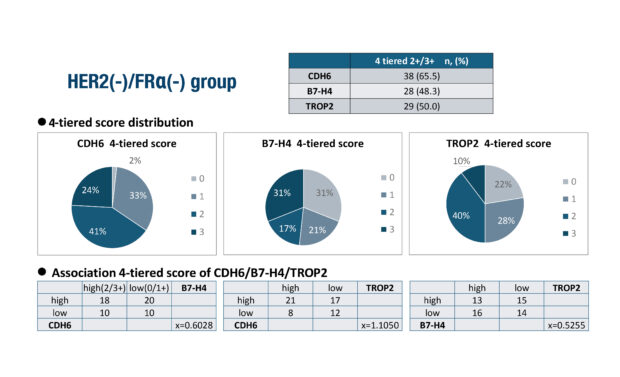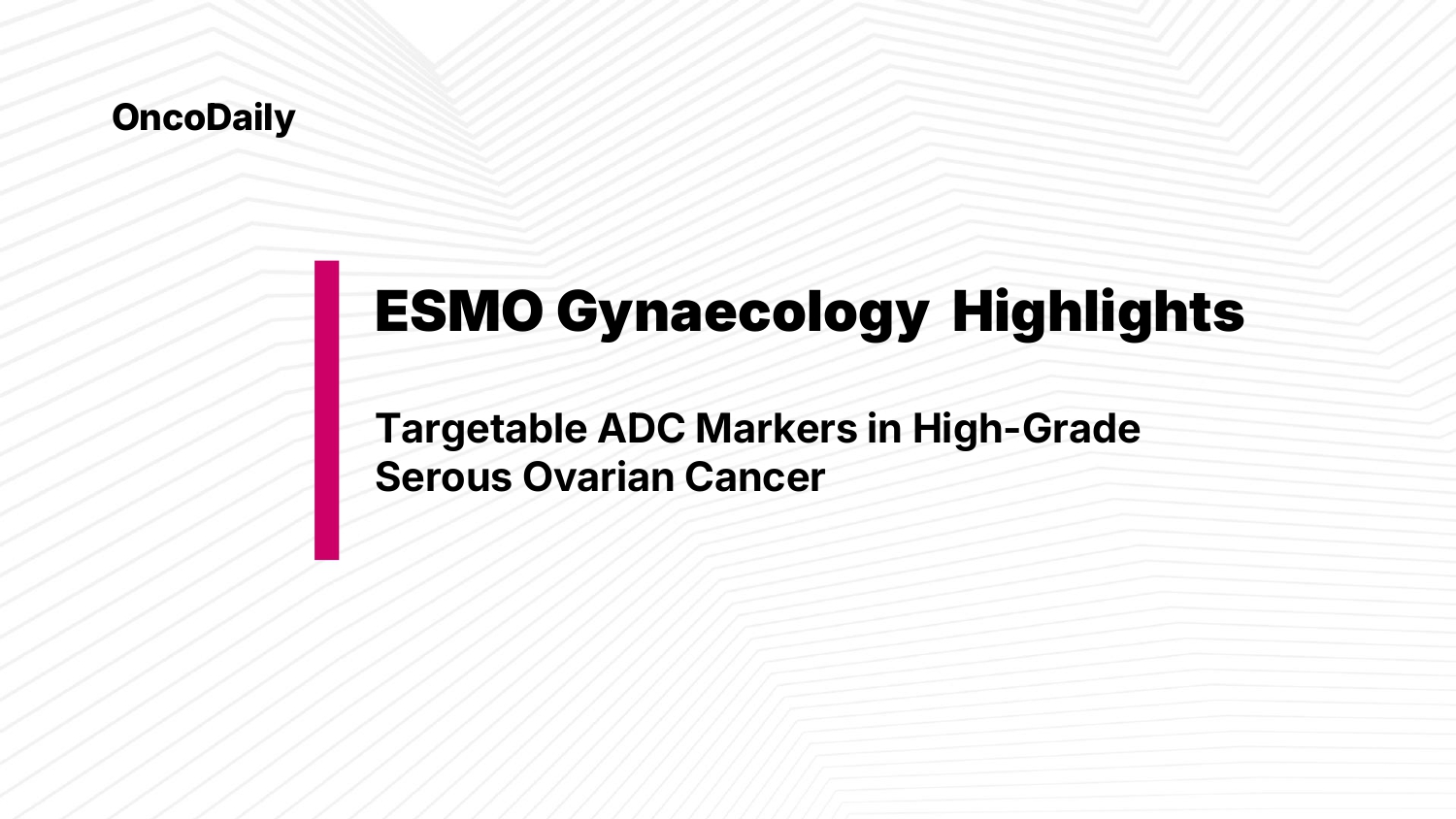HGSOC in Focus-fresh from the podium at the ESMO Gynaecology 2025 Congress! Dr. Kazune Hamagawa of Hidaka, Japan presented new data on the expression landscape of key antibody–drug conjugate (ADC) targets in high-grade serous ovarian cancer (HGSOC), shedding light on potential avenues for expanding targeted therapy in this aggressive malignancy

Background
High-grade serous ovarian cancer (HGSOC) is the most prevalent and lethal subtype of epithelial ovarian cancer, accounting for approximately 70% of all ovarian cancer diagnoses and 90% of ovarian cancer-related deaths. Despite advances in surgical techniques and chemotherapy, the prognosis remains poor due to late-stage diagnosis, rapid disease progression, and frequent recurrence.
Molecular studies have revealed that HGSOC is a distinct entity characterized by near-universal TP53 mutations, widespread genomic instability, and frequent defects in the homologous recombination repair (HRR) pathway. Approximately 20–25% of cases harbor germline or somatic BRCA1/2 mutations, making them responsive to platinum-based chemotherapy and PARP inhibitors. Beyond BRCA mutations, a substantial proportion of tumors exhibit homologous recombination deficiency (HRD), which contributes to sensitivity to DNA-damaging agents.
Histologically, HGSOC tumors originate predominantly from the distal fallopian tube epithelium, challenging the long-held belief that they arise from the ovarian surface. These tumors are high-grade by definition, with marked nuclear atypia, high mitotic index, and absence of low-grade precursor lesions. They tend to disseminate rapidly within the peritoneal cavity, often presenting with extensive peritoneal carcinomatosis and omental metastasis at the time of diagnosis.
Standard treatment includes cytoreductive surgery followed by carboplatin–paclitaxel chemotherapy, with recent incorporation of maintenance strategies such as PARP inhibitors and antiangiogenic agents. However, resistance to therapy remains a major clinical challenge, highlighting the need for novel, targeted therapeutic approaches—including antibody–drug conjugates (ADCs)—aimed at surface antigens highly expressed in HGSOC cells.
Antibody–drug conjugates (ADCs) are emerging as a powerful therapeutic strategy for high-grade serous ovarian cancer (HGSOC), yet comprehensive data on the expression patterns of key ADC targets remain limited. This study investigated the expression of five promising targets—folate receptor-α (FRα), HER2, cadherin-6 (CDH6), TROP2, and B7-H4—in both primary and post-chemotherapy HGSOC specimens to evaluate their relevance for future ADC-based therapies.
Methods
A total of 80 primary and 20 post-chemotherapy HGSOC tumor samples were analyzed using tissue microarrays and immunohistochemistry (IHC). FRα and HER2 were assessed using established scoring guidelines (FRα PS2+ high; HER2 IHC 2+/3+), while a HER2 gastric cancer-based 4-tier system was adapted to evaluate CDH6, TROP2, and B7-H4 (IHC 2+/3+ considered high).
Results
To better understand the therapeutic relevance of antibody–drug conjugate (ADC) targets in high-grade serous ovarian cancer (HGSOC), Dr. Kazune Hamagawa and colleagues conducted a comprehensive immunohistochemical analysis of five surface antigens—FRα, HER2, CDH6, TROP2, and B7-H4—across both primary and post-chemotherapy tumor samples. The aim was to characterize their expression patterns and assess the potential for targetable ADC therapy in a broader population of patients with HGSOC. The findings revealed substantial heterogeneity and overlap in target expression, offering important implications for future treatment strategies
- FRα positivity was found in 23% (18/80) of primary tumors.
- HER2 positivity was rare, detected in 6.3% (5/80).
- High expression rates were observed for:
- CDH6: 69% (55/80)
- TROP2: 54% (43/80)
- B7-H4: 50% (40/80)
- CDH6: 69% (55/80)
- FRα and HER2 showed mutually exclusive expression patterns; only one case exhibited co-expression.
- Among FRα/HER2-negative tumors (n=58), 91% showed high expression of at least one of CDH6, TROP2, or B7-H4, and 55% expressed multiple targets.
- No significant co-expression correlations were found between CDH6, TROP2, and B7-H4.
- Expression stability between paired primary and post-chemotherapy samples was notable:
- FRα: 72% concordance
- HER2: 83%
- CDH6: 72%
- TROP2: 78%
- B7-H4: 78%
- FRα: 72% concordance

Key Takeaways
- A substantial proportion of HGSOC tumors exhibit high expression of novel ADC targets beyond FRα and HER2.
- CDH6, TROP2, and B7-H4 represent highly prevalent, alternative targets in cases lacking FRα or HER2 expression.
- The findings suggest complementary ADC targeting may broaden therapeutic opportunities and enhance clinical outcomes.
You can red the full abstract here.
